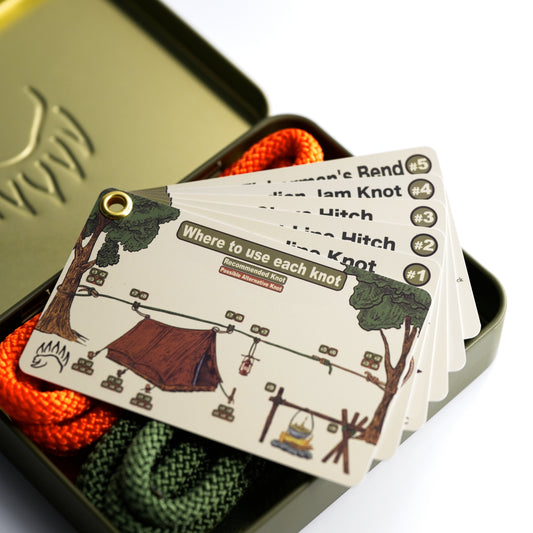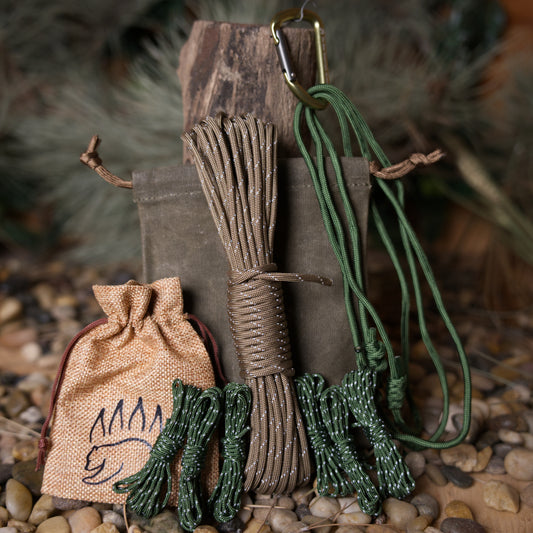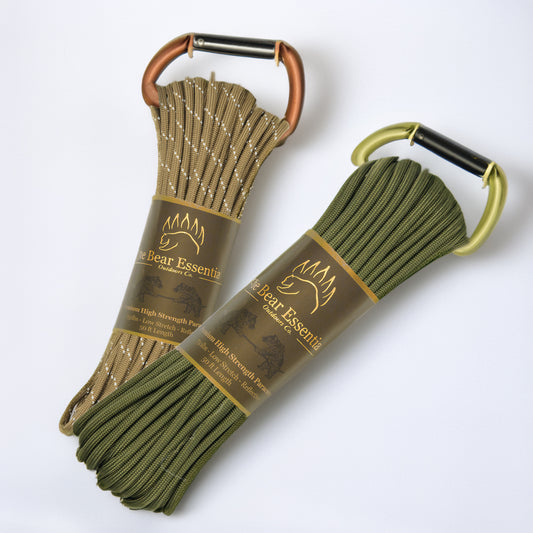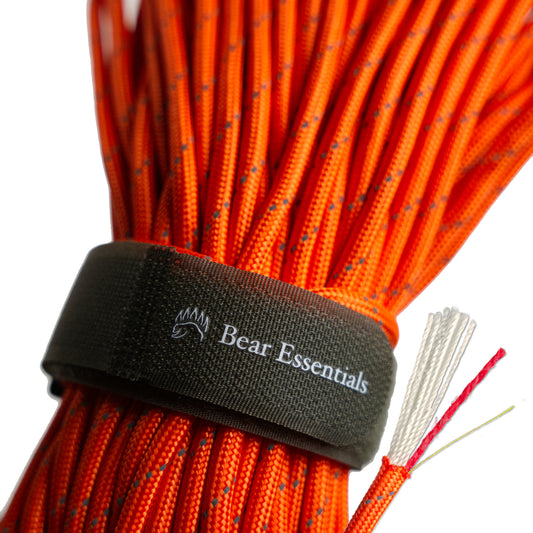How to Tie the Double Bowline
Usage
The Double Bowline is a versatile loop knot favored for its security and ease of untying, even after heavy loading. It is commonly used in climbing, arborist work, and creating anchors around trees or boulders.
Why Learn the Double Bowline?
The Double Bowline offers added security over the standard Bowline, making it a reliable choice for demanding applications like sport climbing and rescue scenarios. Its ability to remain easy to untie under load makes it invaluable for repeated use.
Common Uses
-
Climbing and Mountaineering:
- Tying into a harness for sport or lead climbing.
- Securing ropes to boulders or trees for anchors.
- Arborist Work: Rigging and securing equipment to branches.
- Rescue Operations: Creating secure loops for hoisting gear or individuals.
ABOK Number
(Ashley Book of Knots)
Other Names
Type
|
Notable Features
- Added Security: Incorporates an extra turn to prevent capsizing and provide additional grip.
- Non-Jamming: Easy to untie after being heavily loaded.
- Strength Retention: Maintains up to 70-75% of the rope’s strength.
Variations
-
Bowline vs. Double Bowline:
- Bowline: Simpler and faster to tie but less secure.
- Double Bowline: More robust with added stability, making it ideal for demanding applications.
-
Figure Eight Loop vs. Double Bowline:
- Figure Eight Loop: Highly secure and easier to inspect but harder to untie after heavy loading.
- Double Bowline: Easier to untie and adjust, preferred for frequent loading and unloading.
Similar Knots
Bowline vs. Double Bowline
- Pros: Simple and versatile; easy to tie and untie.
- Cons: Less stable under dynamic loads; prone to slipping if not properly dressed.
Water Bowline vs. Double Bowline
- Pros: Designed for wet conditions with added security; resists slipping in slippery or wet environments.
- Cons: Takes slightly longer to tie and requires more steps to ensure proper dressing.
Bowline on a Bight vs. Double Bowline
- Pros: Creates two secure loops for additional versatility; reliable for rescue and climbing tasks.
- Cons: Bulkier than the Double Bowline; harder to inspect for proper tying.
Figure Eight Loop vs. Double Bowline
- Pros: Highly secure and easy to inspect; widely regarded as one of the safest knots for climbing.
- Cons: Harder to untie after being heavily loaded; requires more time and precision to tie correctly.
History
The Double Bowline, also known as the Round Turn Bowline, has roots in traditional climbing and nautical applications. Clifford Ashley highlighted its ability to resist capsizing, making it a reliable choice for heavy-duty tasks.
Security Level
The Double Bowline is moderately secure and retains up to 75% of the rope’s strength. While more robust than the standard Bowline, it requires careful tying and dressing to prevent failure.
Downsides
- Longer Tying Time: Takes longer to tie than a standard Bowline.
- Backup Required: Less secure than the Figure Eight Loop if not properly backed up.
Structure
- Lay the rope across your hand, forming a small loop.
- Create a second loop below the first.
- Pass the working end through both loops from underneath.
- Wrap the working end around the standing part and back through the loops.
- Tighten the knot by pulling the free end while holding the standing line.
FAQ
What is the Double Bowline used for?
It’s used for creating secure loops in climbing, rescue, and arborist work.
How does it compare to a regular Bowline?
The Double Bowline is more secure and robust, especially under heavy loads.
Can it be untied easily after being loaded?
Yes, it remains non-jamming even after heavy use.
Is it suitable for climbing?
Yes, it’s commonly used for tying into harnesses or creating anchors.
Important Notes on Safety
Always ensure the Double Bowline is properly tied and backed up with a stopper knot in high-stakes applications. Regularly inspect the knot before use, especially in climbing or rescue scenarios.









